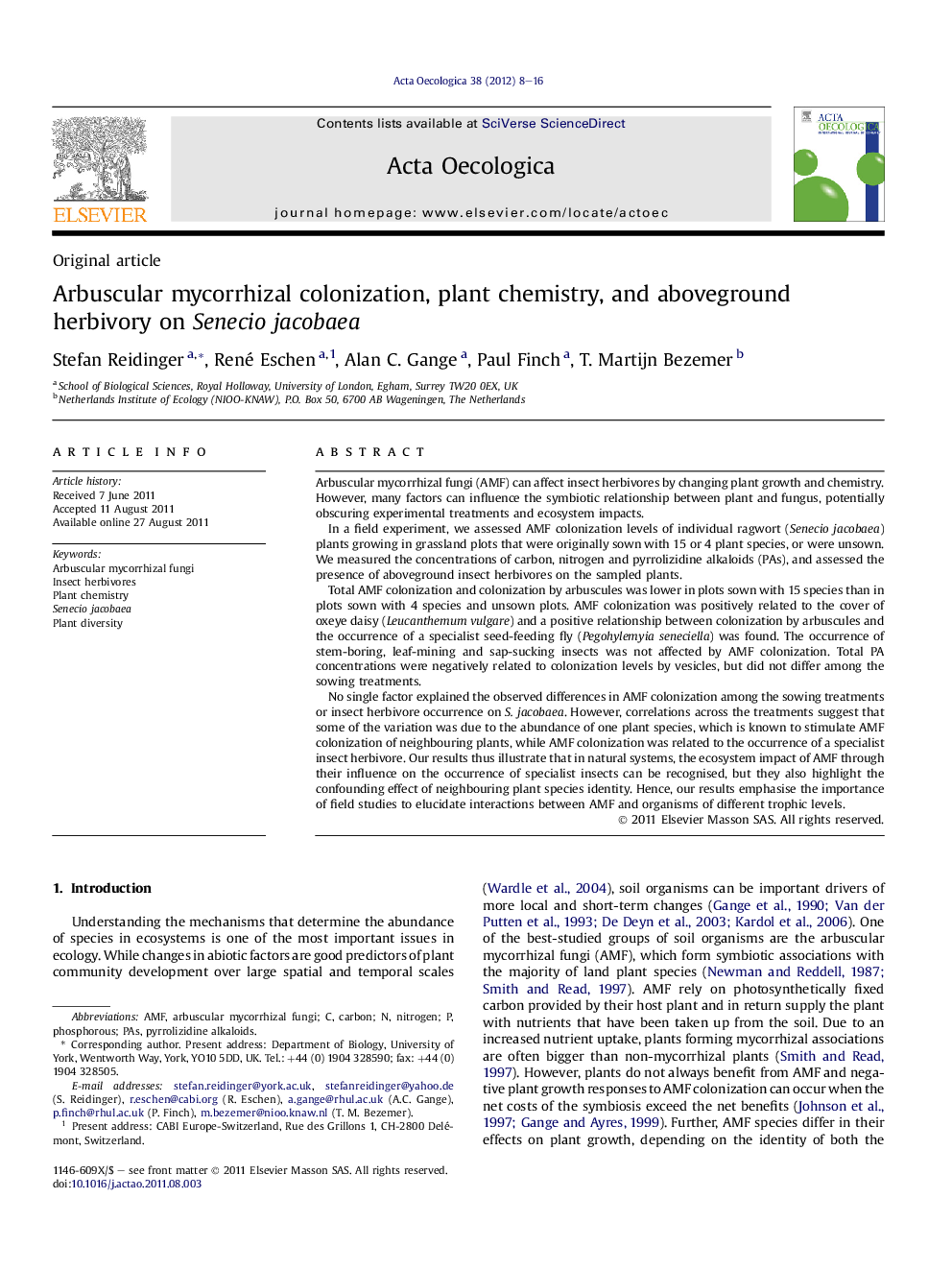| کد مقاله | کد نشریه | سال انتشار | مقاله انگلیسی | نسخه تمام متن |
|---|---|---|---|---|
| 4381241 | 1617733 | 2012 | 9 صفحه PDF | دانلود رایگان |

Arbuscular mycorrhizal fungi (AMF) can affect insect herbivores by changing plant growth and chemistry. However, many factors can influence the symbiotic relationship between plant and fungus, potentially obscuring experimental treatments and ecosystem impacts.In a field experiment, we assessed AMF colonization levels of individual ragwort (Senecio jacobaea) plants growing in grassland plots that were originally sown with 15 or 4 plant species, or were unsown. We measured the concentrations of carbon, nitrogen and pyrrolizidine alkaloids (PAs), and assessed the presence of aboveground insect herbivores on the sampled plants.Total AMF colonization and colonization by arbuscules was lower in plots sown with 15 species than in plots sown with 4 species and unsown plots. AMF colonization was positively related to the cover of oxeye daisy (Leucanthemum vulgare) and a positive relationship between colonization by arbuscules and the occurrence of a specialist seed-feeding fly (Pegohylemyia seneciella) was found. The occurrence of stem-boring, leaf-mining and sap-sucking insects was not affected by AMF colonization. Total PA concentrations were negatively related to colonization levels by vesicles, but did not differ among the sowing treatments.No single factor explained the observed differences in AMF colonization among the sowing treatments or insect herbivore occurrence on S. jacobaea. However, correlations across the treatments suggest that some of the variation was due to the abundance of one plant species, which is known to stimulate AMF colonization of neighbouring plants, while AMF colonization was related to the occurrence of a specialist insect herbivore. Our results thus illustrate that in natural systems, the ecosystem impact of AMF through their influence on the occurrence of specialist insects can be recognised, but they also highlight the confounding effect of neighbouring plant species identity. Hence, our results emphasise the importance of field studies to elucidate interactions between AMF and organisms of different trophic levels.
► Plant diversity sowing treatments affect plant community composition.
► AMF colonization levels are related to plant community composition.
► Seed-feeding insect occurrence is positively related to AMF colonization levels.
Journal: Acta Oecologica - Volume 38, January 2012, Pages 8–16